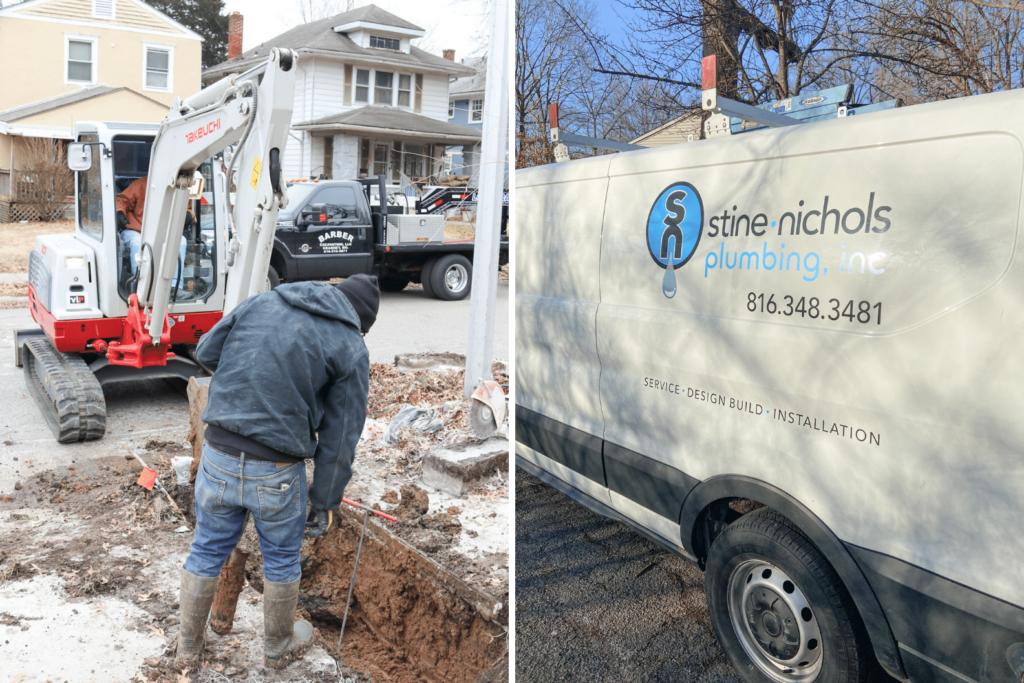There’s no denying the fact that it can be extremely frustrating when your plumbing isn’t working like it’s supposed to. Whether that be the absence of hot water, a faucet not working or even a sewer line failure, it usually requires you to take off work in order to get it fixed. Unless it’s during a worldwide pandemic, in which case you might be working from home already!
Here on our plumbing blog, we like to provide real-world plumbing advice that any homeowner could implement. Aside from different DIY repairs that we feature, we also like to educate homeowners on individual pieces of their plumbing system. Believe it or not, just having a general understanding of how your plumbing works has the possibility to save you plenty of stress and headaches later on.
On today’s blog, we’re going to take a look at a problem that is more common than you might think. Additionally, it’s one of those plumbing problems that could also be a result of a number of different causes as well! That issue is “low water pressure.” You’ve likely experienced this before at least one time or another in your life. Maybe the shower was spraying out water without your normal pressure or the bathtub might have taken forever to fill up. In any case, you likely wondered what could be causing this and how could you fix it. We’ll answer that question today!
Why Does Your Home Have Low Water Pressure?
Potential Culprit #1: Main Shut-Off Valve
If you don’t already know the exact location of your main water shut-off valve, that is certainly a valuable piece of knowledge to have. It is typically found where the water line first enters your home. Keep in mind that depending on the structure of your house, this could be a few different places. The valve will either be in the shape of a lever or a wheel. Either way, you’re going to want to ensure the valve is completely opened, thus utilizing the full pressure of the water system. If it happens to be partially closed, this very well could be the culprit behind your low water pressure issues.
Potential Culprit #2: Are Your Neighbors Experiencing Low Water Pressure Too?
In some cases, the plumbing problem might even be completely out of your control. If low water pressure is a common issue throughout your entire neighborhood, then this is probably going to be an issue you’ll want to notify your local water company or the city about. Before having a plumber out to look at your individual system, we recommend reaching out to each of those parties to investigate the issue first.
Potential Culprit #3: Is the Low Water Pressure Everywhere or Just One Appliance?
This question will help immensely in narrowing down your search for the problem area. If low water pressure is an issue occurring all throughout the house, then you’ll likely be looking for something responsible for supplying water everywhere, as opposed to it just being centralized on one appliance. For example, say you have one individual appliance (such as a faucet) that’s displaying low water pressure. In this case, your problem most likely either resides in a clogged aerator or possibly a leak in the water line supplying that faucet.
For those unfamiliar with the terminology, an aerator is simply a small screen on the end of a faucet. Aerators can serve a variety of purposes, including shaping the faucet water, conserving water usage and preventing splashing. All of which are certainly advantages to having one! However, it’s not uncommon for aerators to also get rusty over time and even get clogged up with debris. When this occurs, you might notice decreased water pressure. The best solution for this? Unscrew the aerator, clean it and reattach it. As simple as that!
Potential Culprit #4: Pressure Regulator
Also known as a pressure reducing valve, a water pressure regulator is designed solely to bring the incoming water pressure down to a safe level. This is in regards to the water entering your house from the main water service line. The reason why this is such a critical piece is because too high of water pressure in your home can cause a bevy of potential problems. In terms of this blog though, a pressure regulator could either not be aligned to the correct settings or even defective. Either way, it would be smart to have a plumber take a look and determine the appropriate steps for replacing it.
Potential Culprit #5: Water Heater Problems
Just as we’ve mentioned many times here on the blog, your water heater is an important piece to your overall plumbing system. It undoubtedly affects your day-to-day life and is a plumbing component you always want working correctly! On the topic of low water pressure, the most common issue in regards to your water heater would be mineral and sediment build-up at the bottom of the tank. If you’ve followed us before on our blog or social media, we preach the importance of flushing your water heater annually quite often. It’s one of the most important maintenance tasks to add to your water heater to-do list.
Interested in learning more about flushing your water heater? We have a past blog post that outlines the entire process, from start to finish. Additionally, annual water heater flushing is a service we offer here at Stine-Nichols as well. If you’re interested in a free quote for that or any other plumbing-related service, fill out the form linked here.
Potential Culprit #6: Corroded or Broken Pipes
Plumbing leaks aren’t always the easiest to spot right away for homeowners. After all, consider the fact that many of these lines are not readily visible, as they could be hidden behind walls, in the ceiling or even underground. As you would likely guess, a pipe that’s leaking could easily be the cause of decreased water pressure. While leaks can occur for a number of different reasons, a piece of information that anyone could utilize is knowing what types of piping they have installed at their house. Galvanized steel, cast iron, copper, polybutylene, lead, PVC, the list goes on! Understanding the potential downsides of the ones you have installed will help you better recognize which potential future problems you could be facing. For example, it’s not uncommon for galvanized steel pipes to gradually corrode over time.
Call in an Expert!
If you would prefer to not have to investigate your entire plumbing system to find the problem, we understand! Sometimes, low water pressure may be due to a matter as simple as the main shut-off valve not being completely opened, while other times you’re looking at some significant re-piping. In either case, it’s not necessarily going to be the same culprit whenever you notice low water pressure.
Our licensed plumbing technicians at Stine-Nichols are experienced with troubleshooting plumbing problems. Once we know the issues you’re experiencing, we can quickly check out your system and figure out what repairs need to be made. Stine-Nichols Plumbing currently services the entire Kansas City area, including all of the surrounding cities. If you’re ever interested in getting a free quote, we encourage you to either give us a call directly at (816) 348-3481 or fill out the form on our website. We look forward to hearing from you!


